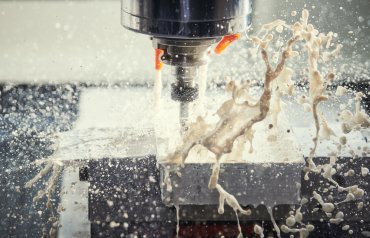MOSCOW – Global volume demand for lubricant additives grew approximately 1 percent in 2017 after increasing an average of 2.6 percent annually from 2014 to 2016, according to a report fromKline & Co.The firm said growth decreased because of a tightening regulatory framework that includes chemicals and biocides regulations in the European Union.
The Parsippany, N.J.-based consultancy also highlighted metalworking fluid additives as one of the fastest growing segments.
Kline estimated that the globe consumed 4.4 million metric tons of lubricant additives in 2017, compared to around 40 million tons of finished lubes.
Additives used in heavy-duty and passenger car motor oils were the main biggest drivers of demand growth from 2014 to 2017, according to Sharbel Luzuriaga, project manager at Kline.
This growth was driven by economic recovery and growth of the vehicle fleet, he told the RPIs Industrial Oils and Metalworking Fluids conference here in May.
Lubricant additives for metalworking fluids is an important market niche and it held around 600,000 tons of products in 2017, Luzuriaga added.
By function, the main additives of this market niche are emulsifiers, corrosion inhibitors, friction modifiers, extreme modifiers and extreme pressure anti-wear additives.
Europe, Asia-Pacific and North America account for the vast majority of metalworking fluid additives demand. The Asian market has expanded considerably over the years driven by rising economic performance and industrial output, Luzuriaga said. Some of the factors are production relocation to Asian countries, notably from Europe. On the other hand some mature European economies are struggling with stagnating economic performance, aggravated by tightening regulatory framework, he added.
Kline found that the global economy is currently facing high uncertainty due to trade wars and the possibility of a global economic slowdown.
The metalworking fluid additive market is affected by government regulations – such as the Registration, Evaluation, Authorization and Restriction of Chemicals; the Globally Harmonized System of Classification and Labeling of Chemicals; U.S. Environmental Protection Agency regulations; and the Biocidal Products Regulation (REACH, GHS, EPA, BPR) – and disrupting technologies such as electric cars, ride sharing and three-dimensional printing. The metalworking fluids additive market drivers are also influenced by the new metallurgy for lightweight vehicles, reduced fluid consumption, minimal quantity lubrication, near net shape and recycle and reuse,” Luzuriaga said.
He said that four market drivers would continue to shape the fluids market and consequently additives used in their formulation.
Kline found that the lubricant additives industry has two categories of participants – package blenders and component suppliers.
Additive suppliers devote research and development efforts to develop chemistries which exhibit superior performance and are legislation compliant, Luzuriaga said.
In 2017, Infineum and Lubrizol held more that 50 percent of the global lubricant additive market, according to Kline. A group of four other suppliers – Afton Chemical, Chevron Oronite, Lanxess and BASF – together shared approximately 40 percent of the demand, though Afton and Oronite are the biggest of these. The remaining 10 percent is shared by suppliers such as BRB, Croda, DOG Chemie, Dover Chemical, Elco, Evonik, Jinzhou Kangtai, King Industries, and Tianhe Chemicals, among others, Kline states.
Kline predicts that overall additive demand will grow faster than finished lubricant demand due to the transition to higher quality levels. Antioxidants, viscosity index improvers, dispersants and friction modifiers will experience stronger than average growth due to an increase in treat rates, while antiwear, extreme pressure and detergents will experience lower growth as their usage is being restricted due to various factors, notably due to health, safety and environmental concerns, Luzuriaga observed.
Photo: Shutterstock/Dmitry Kalinovsky
